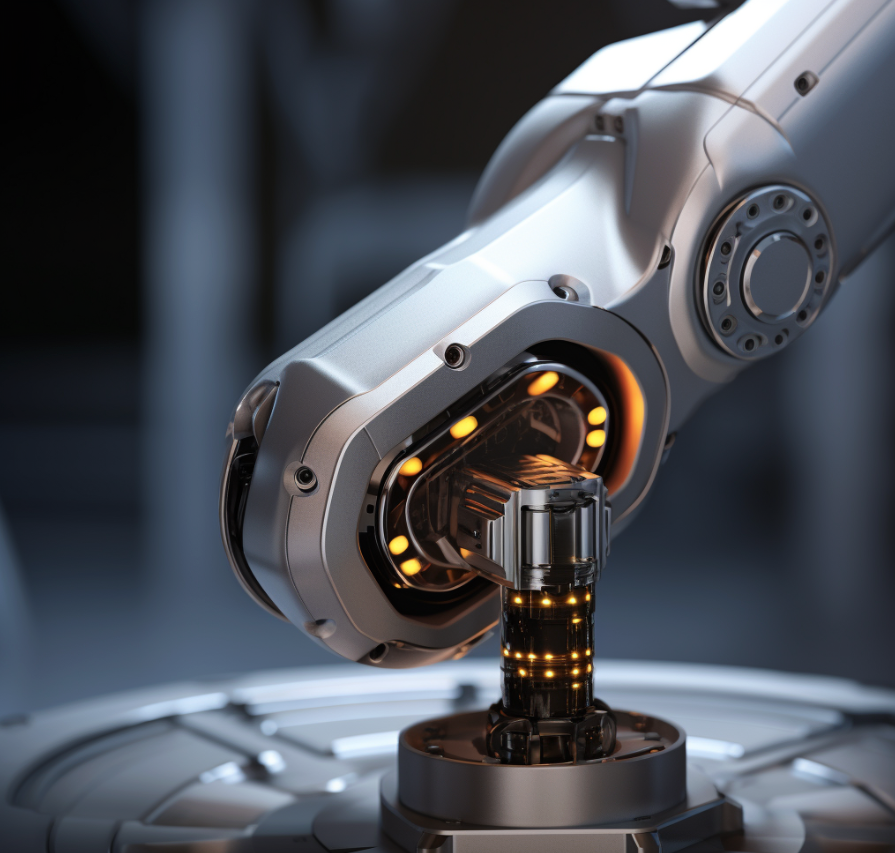

A pneumatic gripper is an end-effector that uses compressed air to power the opening and closing of gripper jaws or "fingers" to grasp objects.
They are very commonly used on Industrial robots and automation systems for handling a wide variety of parts and materials in manufacturing.
You’ll see pneumatic grippers providing a few important advantages:
When you’re shopping around for a pneumatic gripper for your Industrial robot, there are several factors to keep in mind.
They are:
Now, while we all want everything to be plug and play these days, reality will often beg to differ. So, before you start trying to force your pneumatic gripper onto your robot as if it were an old video game cartridge, hear us out.
Follow these steps:

We’ve scoured the internet, and here’s our rundown for the top 5 pneumatic grippers for Industrial robots so you don’t have to waste half of your day tracking down the best options.
They are:
This versatile electric gripper has a payload of up to 20 kg and is programmable for advanced gripping applications. It can handle a wide variety of objects without changing the fingertips, saving you time. The VGP20 connects easily to most robots with a quick-connect electrical interface.
Price: Starting from $6,250.
With flexible rubber fingertips modeled after the human hand, this gripper automatically adapts to handle various shapes and sizes. It has a payload of up to 10 kg. The Robotiq gripper attaches to your robot arm with a plug-and-play USB connection.
Price: Starting from $9,995, which may vary depending on finger material and options.
If you need to handle delicate items or porous materials like cloth, a vacuum gripper is a great option. Piab makes high-quality vacuum grippers with payloads of up to 150 kg. They attach to your robot via compressed air and electric connections.
Price: Expect a range from $3,000 for basic models to $8,500+ for high-payload options.
This compact electric parallel gripper has 40N of gripping force, with options to go up to 800N. It has a durable full metal body and attaches to your robot with integrated air tubing and electric cabling.
Price: Starting from $2,800, which can be higher based on higher gripping force options.
With pneumatic parallel jaws, this gripper has up to 250N of force. It has a slim design to fit into tight spaces. The ERD-E-PS connects via an air hose and electric cable built into the housing.
Price: Starting from $2,900 (USD) which can change depending on jaw size and additional features.
We’re confident that, depending on your needs, any of these top 5 pneumatic grippers will take your Industrial robot to the next level.
But don't forget to factor in all the variables like required grip force, duty cycle, and integration with your existing robot before you make a purchase!
Don't be afraid to reach out to the manufacturer if you need help selecting the optimal gripper configuration. It’s better to spend some time sorting out your questions than having to spend time returning a costly product!
You'll need to run an air line from your compressed air source to the gripper. Use a flexible pneumatic air line rated for your air pressure. Connect it to the gripper's air inlet fitting – make sure to use thread sealant.
Most pneumatic grippers operate at 80-100 PSI. But double-check the specifications for your specific gripper model. Operating below the recommended PSI can zap the overall gripping force.
You'll need a way to turn the compressed air on and off. Solenoid valves connected to your robot controller are commonly used. The valve directs air to the gripper when you want it to close and releases air pressure to open it.
Grippers can have tapped mounting holes or through holes for bolting to your robot. Some also have adapters available for easy mounting to robot arms.
Check with the robot and gripper manufacturers. See if they have an integration or recommend specific models known to work well together.
Yes, you can! While many pneumatic grippers are known for vise grip, several are designed for gentle handling of delicate objects. These specialized grippers often use:
If you're in search of the ideal robot arm and end-effector setup tailored to your requirements, check out RO1 from Standard Bots.
This model is not only versatile with its range of pneumatic gripper options but also features universal M8 connectors and compatibility with OnRobot end-effectors. It's a perfect fit for both expansive and compact machine shops:
Talk to our team of experts for a no-cost, 30-day trial on-site. Our specialists are ready to provide you with the insights and guidance needed to effectively launch your initial robotic setup.